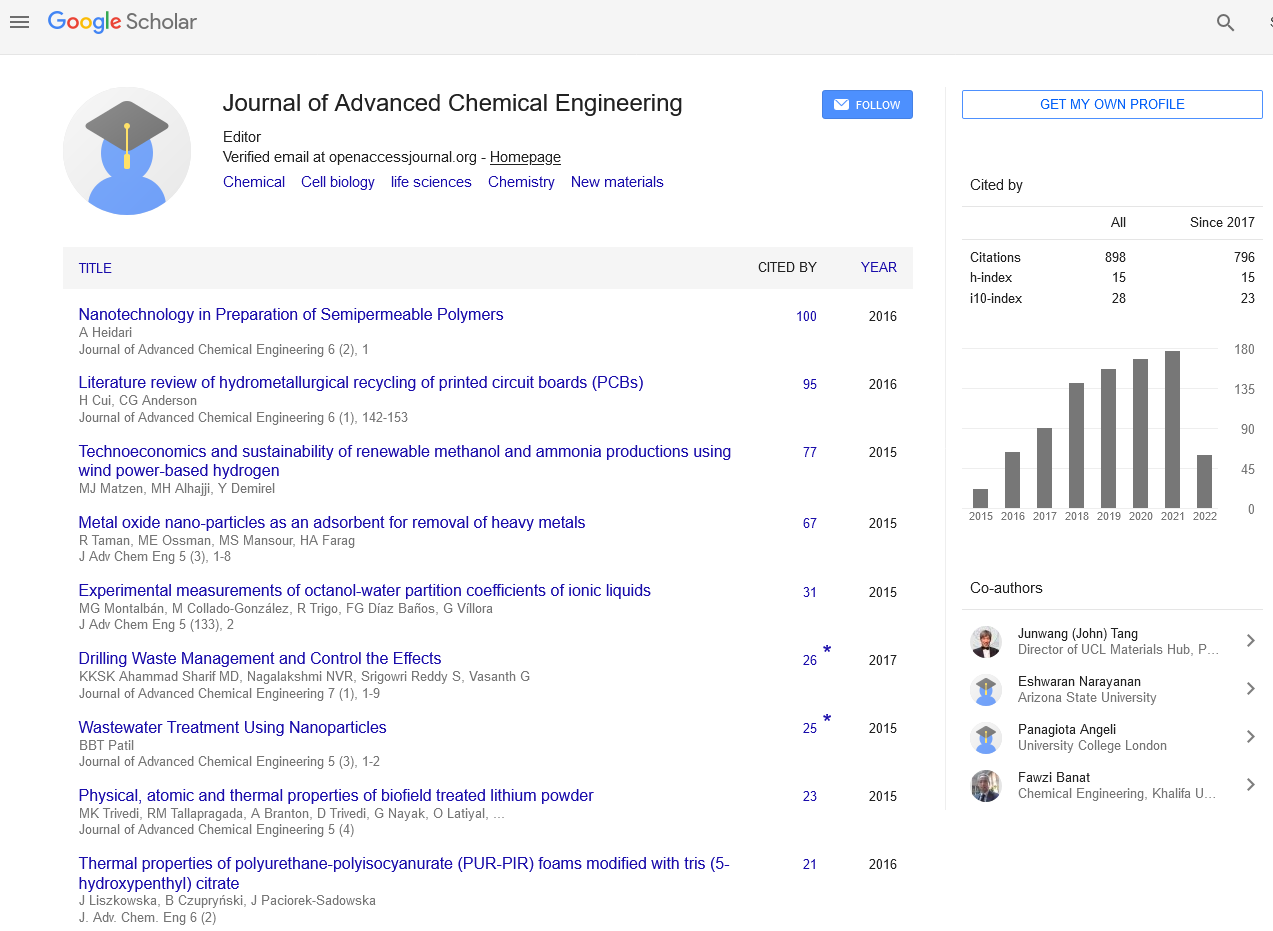Indexed In
- Open J Gate
- Genamics JournalSeek
- Smithers Rapra
- RefSeek
- Directory of Research Journal Indexing (DRJI)
- Hamdard University
- EBSCO A-Z
- OCLC- WorldCat
- Scholarsteer
- Publons
- Geneva Foundation for Medical Education and Research
- Google Scholar
Useful Links
Share This Page
Journal Flyer

Open Access Journals
- Agri and Aquaculture
- Biochemistry
- Bioinformatics & Systems Biology
- Business & Management
- Chemistry
- Clinical Sciences
- Engineering
- Food & Nutrition
- General Science
- Genetics & Molecular Biology
- Immunology & Microbiology
- Medical Sciences
- Neuroscience & Psychology
- Nursing & Health Care
- Pharmaceutical Sciences
Abstract
Control of Morphology and Acidity of SAPO-5 for the Methanol-To- Olefins (MTO) Reaction
Kazusa Terasaka, Hiroyuki Imai and Xiaohong Li
Silicoaluminophosphate (SAPO) zeotype materials, a family of zeolites with micropores, have moderate acid strengths compared with conventional aluminosilicate zeolites; furthermore, their acid amounts can be tuned by the incorporation of Si species into the aluminophosphate (AlPO) framework. The conversion of methanol to light olefins including ethene, propene, and butenes (isobutene, 1-butene, and 2-butenes), methanol-to-olefins (MTO) reaction, is carried out over zeolites as an acid catalyst. In the MTO reaction, the enhancement of the diffusivity of reactants and products and the tuning of the acidity of zeolites are crucial keys to the improvement of the catalyst life due to the suppression of the coke deposition in the pores. In the present study, we have focused on the improvement of the catalytic performance of SAPO-5 materials with the AFI structure with large micropores of 0.73 nm apertures in the MTO reaction. Highly crystalline SAPO-5 with different morphologies and acidities were readily synthesized by merely varying the concentration of the starting gel. The employment of a highly concentrated starting gel with a H2O/Al ratio of 5 led to the formation of smaller-sized SAPO-5 crystallites with a larger amount of mild acid sites compared with SAPO-5 synthesized with the conventional compositions with the H2O/Al ratio of 50. The catalytic performance of the synthesized SAPO-5 materials as an acid catalyst was evaluated in the MTO reaction. The crystallite morphology as well as the acid amount scarcely affected the initial activity and product distribution, while the catalyst life was considerably affected. The decrease in the crystallite size of SAPO-5 led to improving the catalyst life due to the improvement of the resistance to the coke deposition.


